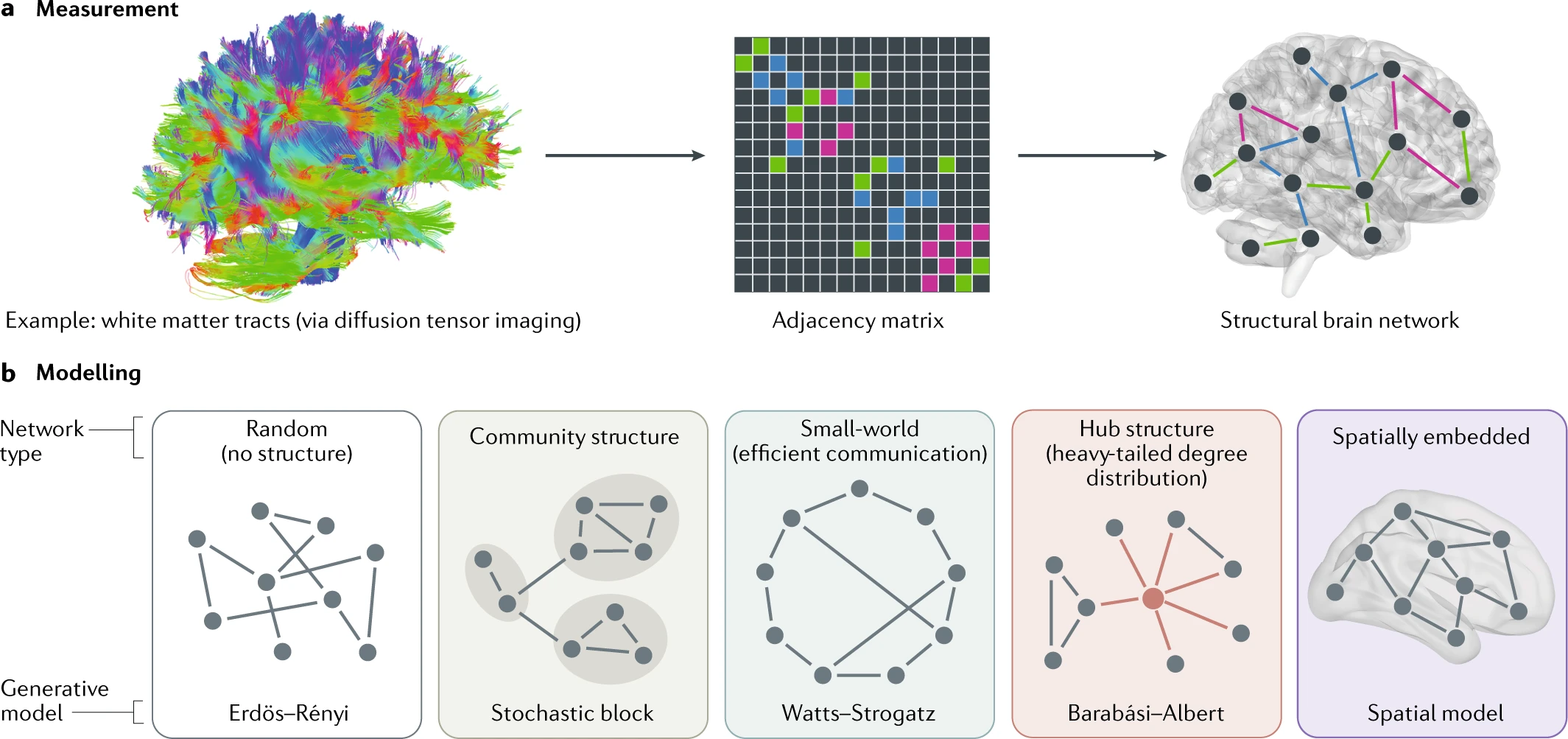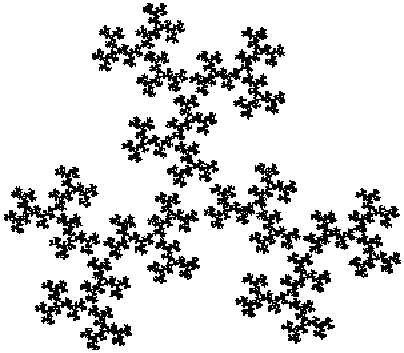Research Interests
I’m interested in understanding the brain’s structure and function by integrating theoretical principles from mathematics and physics with experimental approaches and computational methods.
“In theory, there is no difference between theory and practice. But, in practice, there is.”
— Manfred Eigen
Connectomics and Graph Theory
The brain operates as a complex network of interconnected regions, where communication and information flow are governed by principles of network dynamics. Understanding how these regions interact and coordinate activity requires a formal framework for studying the brain’s connectivity. Graph theory allows scientists to describe the brain as a network of nodes (representing brain regions) and edges (representing the connections between them), offering insights into the brain’s structural and functional architecture.
In graph theoretical terms, the brain can be modeled as a complex system where the topological properties of the network, such as modularity, clustering, and path length, reflect how information is processed and transmitted. These measures allow for the quantification of both global network integration and local segregation. Integration refers to the brain’s ability to coordinate activity across distant regions, while segregation reflects specialized processing within localized clusters.

Lynn, C.W., Bassett, D.S. The physics of brain network structure, function and control.Nat Rev Phys 1, 318–332 (2019). https://doi.org/10.1038/s42254-019-0040-8
Small-world networks, characterized by high local clustering and short path lengths between distant nodes, are thought to represent an optimal balance between local specialization and global integration. The human brain, like many other complex systems, displays small-world characteristics, suggesting that it has evolved to maximize information flow while minimizing the cost of communication between distant regions.
Centrality measures such as degree and betweenness centrality provide insights into the relative importance of specific brain regions (nodes) within the overall network. High centrality nodes, often referred to as hubs, play a critical role in coordinating activity across multiple brain regions. These hubs are integral to maintaining network efficiency and are thought to support the brain’s ability to rapidly integrate information from various sources.
By tracking changes in network topology across different cognitive states or over developmental time scales, scientists can better understand how the brain optimizes its architecture for different functional needs.
The brain, as a dynamic system, presents a series of emergent properties that graph theory is uniquely positioned to capture, but the complexity of these properties leaves many questions unanswered. For instance, how does the brain’s network architecture evolve in response to environmental demands, and how do network properties change across different cognitive states? Understanding the time-varying nature of brain networks could revolutionize our understanding of how the brain integrates information across time, raising questions about the dynamic adaptability of network topology.
Equally important is the potential role that nonlinear dynamics and chaos theory might play in advancing our understanding of brain connectivity. Graph theory, with its current emphasis on linear measures of connectivity, may only be scratching the surface of what is truly a nonlinear dynamic system. Could there be hidden chaotic dynamics in brain networks that influence cognitive flexibility or adaptability?
Network neuroscience must engage with the broader philosophical implications of graph theory’s application to the brain. Is the brain simply a sum of its parts—its nodes and edges—or does the dynamic interplay of connectivity give rise to something fundamentally irreducible? These questions challenge not only our scientific models but also our philosophical understanding of what it means for a system to be truly complex.
Fractal Dimension and Cortical Complexity
The geometry of the brain’s cortical surface, with its intricate folds and complex patterns, poses a unique challenge for scientists attempting to quantify its structural properties. Traditional volumetric measures of brain morphology often fail to capture the true complexity of the cortex. However, mathematical tools such as the fractal dimension, rooted in the principles of nonlinear dynamics and geometrical analysis, offer a novel way to measure the structural complexity of cortical surfaces.

A fractal of three transformations.
Fractals are inherently recursive structures that exhibit complexity regardless of the scale at which they are observed. When applied to brain imaging, fractal dimension measures the degree to which cortical folding patterns remain self-similar at various levels of resolution. This measurement is particularly useful for understanding how cortical morphology influences brain function, as the complexity of these folds is thought to play a key role in neural processing and connectivity.
In the context of neuroimaging, fractal dimension can be applied to data from structural magnetic resonance imaging (sMRI), where it serves as a quantitative measure of the complexity of cortical surfaces. This approach enables neuroscientists to investigate how changes in the brain’s folding patterns correspond to underlying cognitive and developmental processes. Furthermore, fractal analysis provides a unifying framework to study the hierarchical organization of the cortex, where structural complexity at different spatial scales may influence brain function in a non-linear fashion.
The integration of imaging transcriptomics adds a molecular dimension to this geometrical framework. By correlating changes in cortical complexity with regional gene expression profiles, this approach opens the door to understanding how genetic and molecular pathways influence the development of brain morphology.
Moreover, fractal analysis has potential applications in neurodevelopmental studies as well as in aging and neurodegeneration. Understanding how the brain’s complexity changes across the lifespan can provide critical insights into the aging process or how certain conditions affect brain structure.
Future research may ask whether the brain’s fractal-like structure is itself an optimization for specific cognitive processes. Is there an ideal balance between complexity and simplicity in brain folding that maximizes cognitive function? How might cortical complexity influence the brain’s ability to process information efficiently?
Unified Theory of Mind and Brain
The development of a unified theory of mind and brain aims to explain how brain mechanisms give rise to mental functions. This theory integrates design principles, mechanisms, and architectures discovered over the years. The recent Thermodynamics of Mind framework enriches this theory by applying principles from nonequilibrium thermodynamics to quantify the hierarchical organization and asymmetry of information flow in the brain. This framework suggests that the brain’s hierarchical processing resembles thermodynamic systems where asymmetry in information flow determines functional hierarchy. It provides insights into how the brain orchestrates complex cognitive functions efficiently and at minimal metabolic cost.

Kringelbach ML, Sanz Perl Y, Deco G. The Thermodynamics of Mind. Trends Cogn Sci. 2024;28(6):568-581. doi:10.1016/j.tics.2024.03.009

